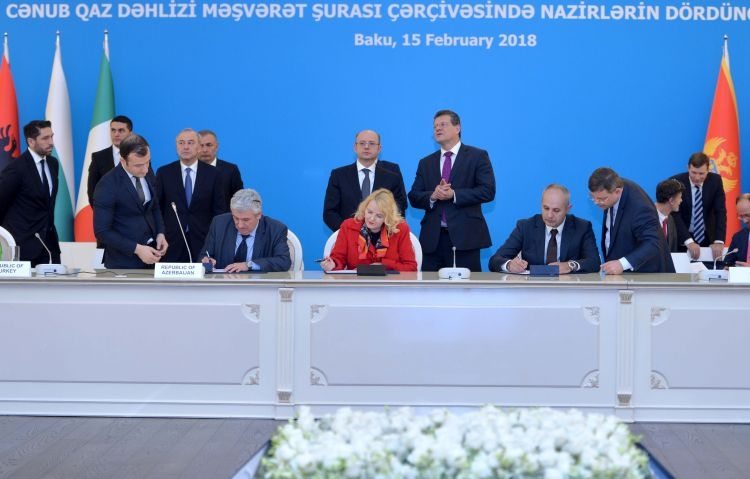
On February 15, 2018, during the Fourth Ministerial Meeting of the Southern Gas Corridor (SGC) Advisory Council held in Baku, the capital of Azerbaijan, two important closing documents were signed concerning the founding of a design company. The Ionian-Adriatic Pipeline (IAP) and for the gasification of Albania.
This pipeline is going to be connected to the Southern Gas Corridor. In addition, the Azerbaijani state-owned company SOCAR will provide services for initial engineering design in Albania.
Representatives of SOCAR, Albgaz, as well as other distributors from Albania, Montenegro and Croatia have signed the documents for the pipeline design.
Croatia expects to receive about 2.5 billion cubic meters of natural gas per year through the Ionian-Adriatic Pipeline (IAP), which is to deliver Azerbaijani gas to Europe. This was stated to a reporter of Trend.az at the Croatian Ministry of Environment and Energy.
“The Ionian-Adriatic pipeline will connect Croatia's existing gas transmission system to the Trans-Adriatic Gas Pipeline (TAP) system through Montenegro and Albania. The total length of the gas pipeline from Split (Croatia) to Fieri (Albania) is 511 kilometers and the length of the Croatian section is 252 kilometers. It is planned that Croatia is going to receive about 2.5 billion cubic meters of natural gas per year through IAP, with a total capacity of 5 billion cubic meters annually”, the Croatian Ministry of the Environment and Energy said.
Further, the ministry noted that Croatia regards the Trans-Adriatic Gas Pipeline (TAP) as an important part of the Southern Gas Corridor and as one of the pipelines that provide diversification of supply routes to Europe and their safety.
The Ionian-Adriatic Pipeline (IAP) will be connected to the Trans-Adriatic Pipeline (TAP) in the Albanian city of Fieri. IAP will secure the supply of Azerbaijani gas to several countries in Southeast Europe.
The pipeline will cross Albania, Montenegro, Bosnia and Herzegovina and is going finally to reach Croatia.